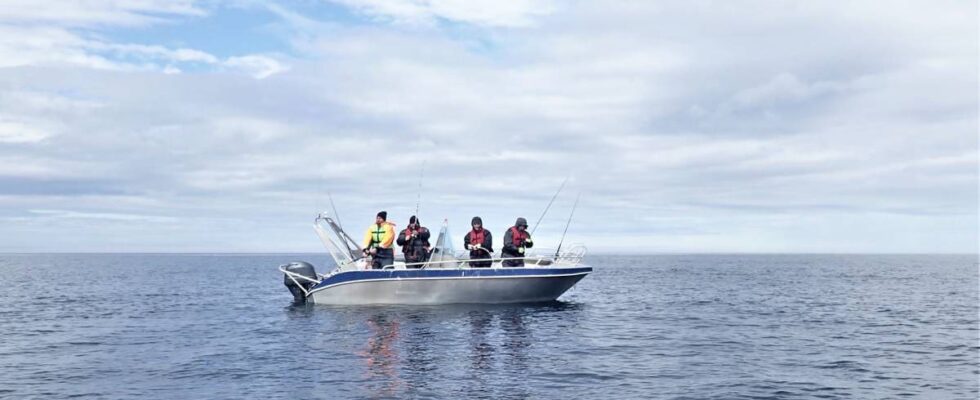How much fish do foreign tourists actually catch in Norway? One would think that the figure was easy to answer, because since 2018 fishing tourist companies along the entire coast have been required to report the number of fish the tourists have caught on the hook. But: A small boat with tourists recorded that they caught a whopping 1.7 billion sei on a short trip. At one tourist company, the statistics showed that the tourists got an average of 33,000 fish per trip. The numbers are obviously wrong. They were still in the statistics of the Directorate of Fisheries, Kystmagasinet revealed two years ago. The reporting was supposed to ensure a better overview of the fish stocks, but several years later it turns out that the efforts of the tourists have so far not resulted in reliable figures. The system has so many weaknesses that the figures are described as unusable without significant quality assurance. – Yes, that’s right. Unfortunately, says researcher Keno Ferter at the Institute of Marine Research. Researcher Keno Ferter believes that the current reporting system for tourists on fishing trips in Norway does not work. Photo: Emma Aldal Sætre No one therefore has a complete overview of how much fish the tourists catch. Major sources of error Researcher Ferter believes there are two main reasons why the figures cannot be used as they are. One is the register of companies itself. The wrong type of company is, for example, on the list, which is not updated to a sufficient extent. The second and most important reason is the actual reporting of the fish catch. – They can bring in whatever they want, says Ferter. He thinks that is problematic. Even if the companies and tourists are good at registering via an app, it is still easy to make mistakes – as the examples above showed. Battle for the tourists In addition, the overview of the catches is publicly available. Everyone can see how much the tourists have fished with the individual company. It’s unfortunate, says Keno Ferter. – There are companies that have said that tourists have canceled orders because they saw that the neighbors had a much higher catch. Fishing tourists have become a common sight along the coast of Norway. Around 2,000 tourist companies offer this type of activity. Photo: Linda Bjørgan / news Can be abused In other words, the system can be abused in the fight to attract tourists. You can also turn it around. The system can also be abused to underreport catches. According to Ferter, the companies may do so for fear of being suspected of conducting unethical fishing, or of being accused of facilitating smuggling. Ferter states that those who are very good at reporting catches are often those who also have the largest catch. – Then they get it right in the face and say that we have now made an effort with reporting, and it just backfires hard on us, he says. The reporting is still not completely wasted, according to Ferter. As long as you change the entire system. He wants only a few randomly selected tourist companies each year to report the number of fish the tourists catch, and not all of them as today. It will make it easier to have an overview and to have better control, he believes. Keno Ferter at the Institute of Marine Research has several suggestions on how to get a better overview of fishing tourism in Norway and how much fish is caught. Photo: ERLEND A. LORENTZEN / MARINE RESEARCH INSTITUTE To be expanded over time The Directorate of Fisheries has also realized that the system has weaknesses. Section leader for fisheries regulation, Trond Ottemo, states that a working group in the directorate is working on proposals to improve the regulations and how tourists report fish catches. Trond Ottemo in the Directorate of Fisheries states that proposals for improvements to the system will be submitted in August. Photo: Vegard Oen Hatten / Directorate of Fisheries This report is expected in August. – Before the reporting scheme was implemented, there was no systematic collection of information about tourist fishing businesses or guests’ catches. – The introduction of the current registration system provides a basis for ongoing reporting of data from the tourist fishing industry, and must be seen as the start of something that can be improved and expanded over time, Ottemo writes in an e-mail to news. He also points out that tourists can currently only report five selected species. Positive about the reporting Rolf Dagfinn Berge runs the adventure company Arctic Nuvsvåg in Loppa, and has eight boats available for tourists. Although the researchers believe the system has weaknesses, he is satisfied with the app that the tourists must use to report the catch. – For us, it’s very good, because we get an overview of what they fish. He also says that the tourists have no problem using the app. Rolf Dagfinn Berge runs a fishing tourist business here in Nuvsvåg in Loppa municipality in Finnmark. Photo: Privat Berge also points out that the app is good for safety, because the tourists have to go through a safety check before they go fishing. – They have to check whether they have petrol, whether their mobiles are charged, enter how many people are in the boat, where they are going and how long they will be out. They also register the fish catch when they come ashore. He also says that the tourists are closely monitored when it comes to how much fish they are allowed to take out of the country, which is 18 kilos. Berge believes the authorities should rather concentrate on gaining more control over unregistered fishing. By that he means tourists who do not fish with a tourist company. Published 05.07.2024, at 17.17
ttn-69
Fishing tourists report how much fish they catch, but the numbers cannot so far be used by the researchers – news Troms and Finnmark

